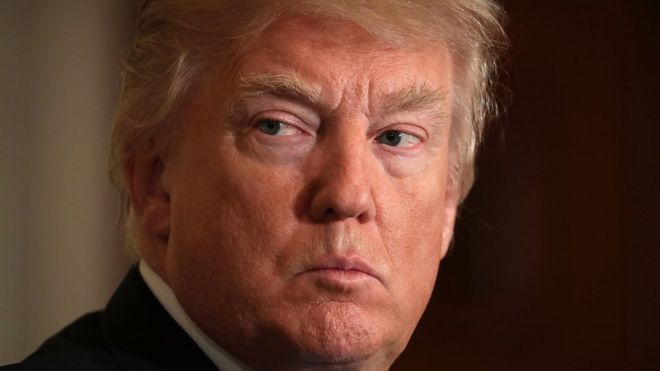In his first prime-time speech on a specific policy issue, the Republican leader will address the nation at 21:00 local time (01:00 GMT).
He said he had reached a decision after reviewing war options with his national security team at Camp David.
Mr Trump once called for a full US pullout from Afghanistan.
He announced a strategic review soon after taking office in January.
Gary O'Donoghue, Pentagon reporter, BBC News
So what can the president do when he addresses the nation?
Option 1: He could pull out all 8,400 US troops and let the Afghans get on with it. That could be popular at home and would be consistent with what Donald Trump has previously said. But it would leave a dangerous vacuum to be filled not just by Afghan rebels, but also by embryonic Islamic State affiliates which are taking hold in the east of the country.
Option 2: He could pull out a large number of US troops and deploy private contractors to continue the work of advising and assisting the Afghan military, in effect outsourcing the job. That's not likely to be popular with the Afghan government, and Washington would still get the blame if things did not work out.
Option 3: And this seems the more likely one. He could send more troops (up to 4,000 the best guess) to bolster the training of more Afghan security forces and perhaps add to the American special forces who are involved in the fight to expel IS related groups.
Whatever he decides, analysts will be looking for something that amounts to a strategy and not just a change in tactics and that will probably have to involve drawing other countries in the region, such as Pakistan and Russia, into the discussion.
He will deliver his first major national security address at a military base next to Arlington National Cemetery, where many of the 2,200 US troops who have died fighting over 16 years of war in Afghanistan are buried.
Mr Trump is also expected to outline a more aggressive US counter-terrorism policy for Afghanistan and Pakistan.
- Taliban letter to Trump urges withdrawal
- How Trump might break Afghan stalemate
Earlier this year, the president empowered Defence Secretary Jim Mattis to set troop levels in Afghanistan.
General John Nicholson, the top US military commander in the country, has requested some 4,000 additional US forces.
He told Afghan troops at a training base southeast of Kabul on Sunday: "We are with you and we will stay with you."
US combat operations against the Taliban officially ended in 2014, but special forces have continued to provide support to Afghan troops.
- Can Afghan military turn the tide in Taliban fight?
- Four days behind the Taliban front line
- Tough school? War, illiteracy and hope in Afghanistan
Current US troop numbers in Afghanstan are about 8,400.
The Afghan government continues to battle insurgency groups and controls just half of the country.

Mr Trump has previously supported pulling troops out of the conflict, which began under President George W Bush in 2001 after the 9/11 attacks.
"I took over a mess, and we're going to make it a lot less messy," Mr Trump said when asked about Afghanistan earlier this month.
"We're not winning," he told advisers in a meeting in July.
His defence secretary has argued a US military presence is necessary to fight off threats from Islamist militants.
Mr Mattis visited Afghanistan over the weekend, saying he was satisfied with the administration's new strategy.
Former White House strategic adviser Steve Bannon had called for the withdrawal of all US forces, arguing the war was unwinnable.
But he was fired by the president on Friday.
[BBC SOURCES]






0 comments:
Post a Comment